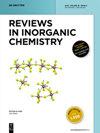无机聚合物复合电解质:基础知识、制造、挑战和未来展望
IF 3.1
3区 化学
Q1 CHEMISTRY, INORGANIC & NUCLEAR
引用次数: 0
摘要
本综述涵盖无机聚合物复合电解质材料的基础知识,这些材料将无机成分与聚合物基质相结合,以增强电解质的离子导电性和机械性能。这些复合电解质通常用于固态电池、燃料电池、超级电容器和其他电化学装置。在聚合物基质中加入无机成分(如陶瓷纳米颗粒或金属氧化物)具有多种优势。无机成分可提供离子传输通道、降低聚合物基体的迂回度并促进聚合物链之间的离子跳跃,从而提高整体离子传导性。此外,与纯聚合物相比,无机材料通常具有更高的热稳定性和化学稳定性,可提高复合电解质的安全性和耐用性。无机聚合物复合电解质中使用的聚合物基质可能各不相同,但常见的选择包括聚氧化乙烯(PEO)、聚偏二氟乙烯(PVDF)、聚丙烯腈(PAN)和聚氧化乙烯/聚氧化丙烯(PEO/PPO)混合物。这些聚合物具有良好的机械柔韧性和可加工性,可用于制造薄膜或膜。无机聚合物复合电解质的制造方法取决于具体应用和所需性能。常见的方法包括溶液浇铸、原位聚合、熔融混合和电纺丝。在制造过程中,无机成分通常会与聚合物基质分散或混合,然后将得到的复合材料加工成所需的形式,如薄膜、膜或涂层。无机聚合物复合电解质的性能评估基于其离子导电性、机械强度、电化学稳定性以及与电极材料的兼容性。研究人员继续探索无机和聚合物成分的各种组合以及优化策略,以进一步提高这些复合电解质的整体性能,用于先进的能量存储和转换应用。本文章由计算机程序翻译,如有差异,请以英文原文为准。
Inorganic-polymer composite electrolytes: basics, fabrications, challenges and future perspectives
This review covers the basics of, inorganic-polymer composite electrolyte materials that combine inorganic components with polymer matrices to enhance the ionic conductivity and mechanical properties of the electrolyte. These composite electrolytes are commonly employed in solid-state batteries, fuel cells, supercapacitors, and other electrochemical devices. The incorporation of inorganic components, such as ceramic nanoparticles or metal oxides, into a polymer matrix provides several advantages. The inorganic components can improve the overall ionic conductivity by providing pathways for ion transport, reducing the tortuosity of the polymer matrix, and facilitating ion hopping between polymer chains. Additionally, inorganic materials often exhibit higher thermal and chemical stability compared to pure polymers, which can enhance the safety and durability of composite electrolytes. Polymer matrices used in inorganic-polymer composite electrolytes can vary, but common choices include polyethylene oxide (PEO), polyvinylidene fluoride (PVDF), polyacrylonitrile (PAN), and polyethylene oxide/polypropylene oxide (PEO/PPO) blends. These polymers offer good mechanical flexibility and processability, allowing for the fabrication of thin films or membranes. The fabrication methods for inorganic-polymer composite electrolytes depend on the specific application and desired properties. Common approaches include solution casting, in situ polymerization, melt blending, and electrospinning. During the fabrication process, the inorganic components are typically dispersed or mixed with the polymer matrix, and the resulting composite is processed into the desired form, such as films, membranes, or coatings. The performance of inorganic-polymer composite electrolytes is evaluated based on their ionic conductivity, mechanical strength, electrochemical stability, and compatibility with the electrode materials. Researchers continue to explore various combinations of inorganic and polymer components, as well as optimization strategies, to further improve the overall performance of these composite electrolytes for advanced energy storage and conversion applications.
求助全文
通过发布文献求助,成功后即可免费获取论文全文。
去求助
来源期刊

Reviews in Inorganic Chemistry
化学-分析化学
CiteScore
7.30
自引率
4.90%
发文量
20
审稿时长
1 months
期刊介绍:
Reviews in Inorganic Chemistry (REVIC) is a quarterly, peer-reviewed journal that focuses on developments in inorganic chemistry. Technical reviews offer detailed synthesis protocols, reviews of methodology and descriptions of apparatus. Topics are treated from a synthetic, theoretical, or analytical perspective. The editors and the publisher are committed to high quality standards and rapid handling of the review and publication process. The journal publishes all aspects of solid-state, molecular and surface chemistry. Topics may be treated from a synthetic, theoretical, or analytical perspective. The editors and the publisher are commited to high quality standards and rapid handling of the review and publication process.
Topics:
-Main group chemistry-
Transition metal chemistry-
Coordination chemistry-
Organometallic chemistry-
Catalysis-
Bioinorganic chemistry-
Supramolecular chemistry-
Ionic liquids
 求助内容:
求助内容: 应助结果提醒方式:
应助结果提醒方式:


